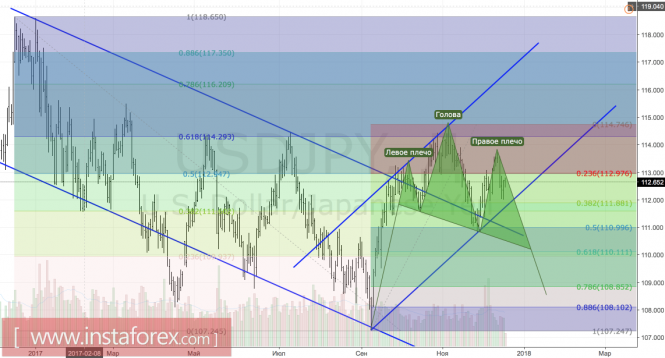The Bank of Japan puts the final chord in a series of meetings of the central banks issuing G10 currencies in December. Despite sluggish inflation at 0.8% y / y, none of the 44 economists surveyed by Bloomberg expects monetary policy adjustments at the meeting on 20-21. Most of them believe that the next step will be its tightening. Although, this is unlikely to happen until 2018.
Evidence shows that BoJ has already started to normalize monetary policy while carefully trying to avoid talking about this topic. During the last 12 months, it acquired assets worth 61 trillion yen despite the Central Bank's reiterated 80 trillion yen. Such a breakdown is associated with the transition in 2016 to the regime of targeting the yield curve, which reduces the need for an active presence of the regulator in the debt market. It already owns about 40% of circulating bonds. Curiously, the median forecast of Bloomberg experts suggests that the volume of purchases will drop to 41 trillion yen in 2018 and more than a third of specialists expect BoJ to raise the required yield of 10-year bonds from 0%. If so, the growth rate of the balance sheets of the world's leading central banks will continue to fall.
Dynamics of central bank balances

Source: Financial Times.
The tightening of the monetary policy of the Bank of Japan is likely to strengthen the yen's position, which will create difficulties in achieving a 2% inflation target. That is why Tokyo is trying its best to convince investors of its commitment to the principles of cheap monetary policy. Moreover, there are increased risks of a "dovish" rhetoric of the Board of Governors at the meeting on December 20-21 due to the growing gap between inflation and other economic indicators. Indeed, GDP gained a good move. Business activity is near the maximum marks for the 10th anniversary and consumer prices are behaving very modestly.
Do not be mistaken. The Bank of Japan is just hiding behind the screen of adherence to monetary expansion but in fact, it will normalize the policy which makes the yen a very interesting asset in 2018. Moreover, Asia will catch up. While the economies of its countries lagged behind the US and the eurozone, a strong global demand and a lagging cycle can all change the situation.
Is it worth it to actively sell USD / JPY now? We don't think so. Short-term implementation of tax reform and a compromise on the issue of the ceiling of the national debt will return interest of investors to the US dollar. Trade on reflation, topical at the end of 2016, is not in a hurry to wake up as participants in market battles need facts, not rumors. Who wants to lose serious money because of unpleasant surprises from Congress? Let them agree, then buy.
Technically, the USD / JPY exit out of the upward trading channel, followed by a successful support storm at 111.65-111.85 and at 111, will increase the risks of activation of the pattern "Head and shoulders" and the likelihood of a long-term downtrend recovery. On the contrary, a successful resistance test at 113.8 will allow the pair to continue the upward trend.
USD / JPY, daily chart

